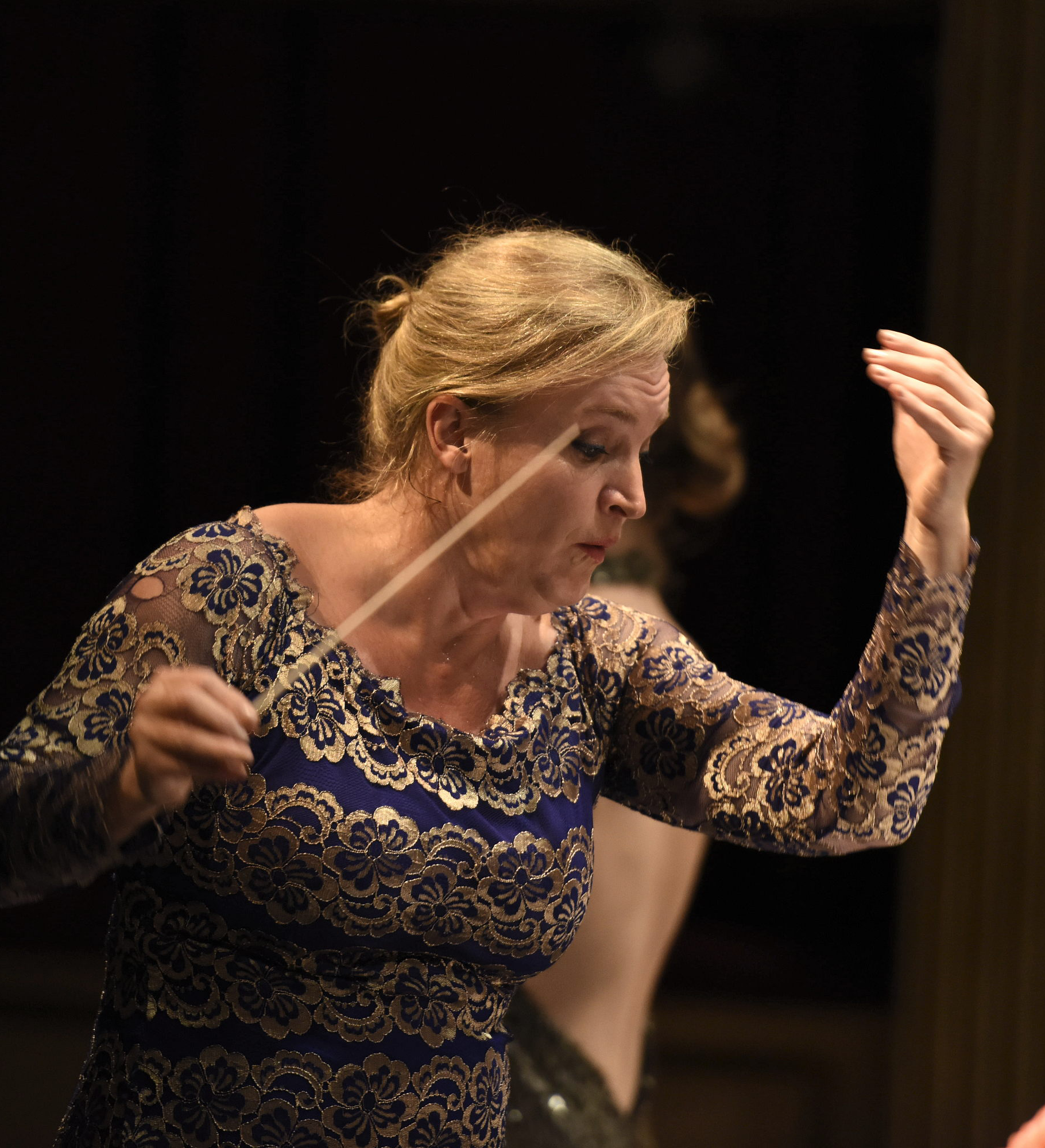Meters & Beat Patterns

While there are many exceptions, most musical works have a consistent meter and make use of a regular pattern of accents within that meter which serve as fundamental characteristics of the piece.
Meter
In most cases, music that has a consistent meter will be felt has having two, three or four beats per measure.
While some pieces may be notated in a way that implies more than four beats per measure, listeners tend to group beats together — a process called chunking — to simplify measures into two, three, or four beats.
Music in complex meters are also susceptible to this effect, using beats of different lengths.
Conducting Patterns
Large groups of musicians like orchestras, choirs, and concert bands often rely on a conductor to coordinate their performance. Whether they are using their hands or a baton, conductors will often use specific a pattern of movement for each meter. In these patterns, beats are indicated by an ictus, where the conductor appears to touch an imaginary horizontal line at the bottom of the pattern.
In slower tempos, conductors may employ patterns where each subdivision is shown with a less pronounced ictus.
Smaller groups of musicians are usually able to coordinate their performance without the need for a conductor, coordinating entrances with exaggerated movements, verbalized countoffs, or drum beats.
Anacrusis
Musical works will sometimes begin with an incomplete measure, called an anacrusis or pick-up note (or notes). When notated, these shortened measures are not shown with a different time signature.
Older scores will often account for these missing beats by placing a correspondingly shortened measure at the end of the piece, called a catalexis, but this is only necessary for repeated sections where the meter is meant to be preserved.
Beat Patterns
Many pieces of music feature a specific pattern of accents within the overall meter that create a specific rhythmic feel, called beat patterns.
Basic Beat Patterns
Straight Beats? I dunno
The most straightforward beat pattern is one in which each beat is given an equal emphasis. This pattern is common in hymn writing.
When used in popular music in a quadruple meter, this beat pattern is often called four on the floor and features a bass drum hit on each beat.
Afterbeats
A beat pattern which accents all the beats in the measure except for the first beat is called afterbeats. The omission of the first beat creates a negative space which itself can be heard as an accent.
Offbeats and Backbeat
Placing rhythmic accents on the beats following strong beats creates a beat pattern called offbeats, which is common in styles such as polka and reggae.
When offbeats are incorporated into a drum pattern in quadruple meter, it is called a backbeat, a rhythm that is considered one of the fundamental characteristics of rock.
Syncopation
Rhythms which feature a strong contrast against the prevaling meter are called syncopations. In most case, these rhythms feature accents on weak beats or subdivisions between beats, where notes are held through the strong beats in a measure.
Beat Anticipations
A simple form of syncopation includes notes which begin on the subdivision before a beat. An example of this is a beat pattern in quadruple meter with accents on the first beat and on the subdivision between the second and third beats.
A slightly more complicated syncopation is the tresillo beat pattern, which adds a third accent on beat four.
A common beat pattern in Jamaican dancehall music uses a tresillo pattern fit into two beats.
The son clave beat pattern is a two-measure pattern that begins with a tresillo. The second measure features accents on beats two and three.
This pattern — named for a Cuban dance and music genre called son, where it is played on the claves — is extremely common in afro-cuban music.
Another variation of the tresillo is the reggaeton beat pattern, which adds an accent on the second beat.
Section Title
Section heading text.
Example of scale degrees: 1, 2, 3
Example of accidentals: F, Bb, C natural, Abb, D##
Notes: F#, Bb, C natural, Abb, D##
Form notation: ABC, A''', ||:A:||.
Example of a Zotero citation.
Subsection
Subsection text.

List Item
List Item text
List Item
List Item Text
Subsection
Subsection text.
Subsection
The following figure has uncopyrighted audio hosted locally, a braille download and a MusicXML download.
The following figure has copyrighted audio linked to YouTube, Spotify and Apple Music.
Chapter Title: Summary
- A summary of a main point in the lesson.
- A detail about that point.
- Another detail.
- Another summary of a concept in the lesson.